Having captions is crucial to a great video. You might wonder how to add closed captions to a YouTube video, or to add captions in a video itself. Regardless, it’s time to make captioning a key part of your video workflow!
While adding captions and subtitles goes beyond the basics of video creation, doing so has never been easier. These days you can even turn screenshots into videos in just a few clicks! Captions and subtitles will also make a video stand out and ensure your audience gets the most out of your content.
Captions and subtitles make your videos accessible to a larger audience. This not only gives you a better ROI, it allows you to help more people with your videos.
Whether you do it yourself before exporting, or use an auto-transcription tool, it’s super simple to make sure your audience has easy access to your great content!
Easily add captions to your videos!
Download a free trial of Camtasia to seamlessly add subtitles to your video.
Download NowHow to add captions to a video
You’ve definitely seen dynamic captions like these on social media videos.

Today I’m going to show you how you can get this effect by just dragging and dropping with Camtasia.
To follow along with this one, you’ll need to get your hands on the latest version of Camtasia.
1. Import or record your video
Whether you filmed with your phone, camera, or Camtasia Rev, add your footage to the timeline.
You can add captions to the raw footage and make edits that will bring your captions along for the ride throughout the process. But for this workflow, we’re going to wait until I’ve all the edits are made to make this as simple as possible.

2. Access the Captions Bin
Mac users will see a new asset bin on the left, but the Captions Bin has been there all along on Windows. If your Camtasia window is smaller, you may have to click the more button to find it. And if you use captions often, you can now also reorder these tabs by clicking and dragging so you can make them easier to find.

3. Choose Dynamic Captions
Inside the captions bin, there are two tabs. One for captions, but we want the other one, dynamic captions.

And you’ll see a variety of options you can choose from.

4. Trim and customize your captions
Camtasia shows you that it’s transcribing on the audio clip, and when it’s done, you’ve got dynamic captions in your video.

By default, the caption track is a set duration, and it most likely won’t be as short or as long as your video, so make sure to trim it or extend it out as needed.
5. Edit text properties
There are a ton of customization options in Camtasia.
Click on the caption track to open the text properties panel so you can make some changes. The highlighting drop down determines if you want to highlight the word being said or just leave the entire line of text to appear motionless, on screen, similar to standard captioning.
Speaking of which, we do recommend one line at a time as a best practice. But if you feel that you should have more, you can grab the text bounding box on the canvas and stretch it upward to reveal more text lines.

While we’re talking about the canvas, even though most of our callouts are edited there, if you want to combine, delete, or edit the words in the caption, click the audio track and make your edits under the Caption Transcription section in the bin.

6. Change your style
There are multiple ways to swap out styles. But it’s easiest to just drag the new style on top of the one already in the timeline, hover over it until it turns green, and select replace, which will retain the duration.

You can also just delete one and put a new one on the timeline. The nice thing about captions being attached to the audio track is even after deleting your captions and replacing them with a new style, any edits you make to the text are still there.
You can add more emphasis to your highlighted word by adding a background behind it and focus your viewer’s attention. Choose a color, adjust the opacity of the shape, size it up or down with scale, or soften the corners with the radius. Slider.
Play around with this to find the style that you like best.

7. Save your style
After you’ve made your changes, you may look at this caption and go, “Wow, this is it.”
If the caption you created is the one you want to use from now on, but you don’t want to customize it each time, you don’t have to.
At the top of the properties panel, click the plus button and name your new style. It saves in your dynamic captions bin. You can even star it so it’s easy to find with all of your other favorites.

Once you have all your captions ready to go, you can save your video as a local file or share it directly to YouTube, Google Drive, and other sharing destinations.
Easily add caption to your videos!
Download a free trial of Camtasia to seamlessly add captions to your video.
Download NowHow to add captions to a video with YouTube
One of the most obvious ways to add captions involves using the world’s largest video platform — YouTube!
Once you make a YouTube video, upload your video file and head over to the YouTube studio editor. From there you can go to the captions panel and choose to add new subtitles or closed captions.
For this example, we’ve already added two different languages but now we’re going to look at adding English captions as well.
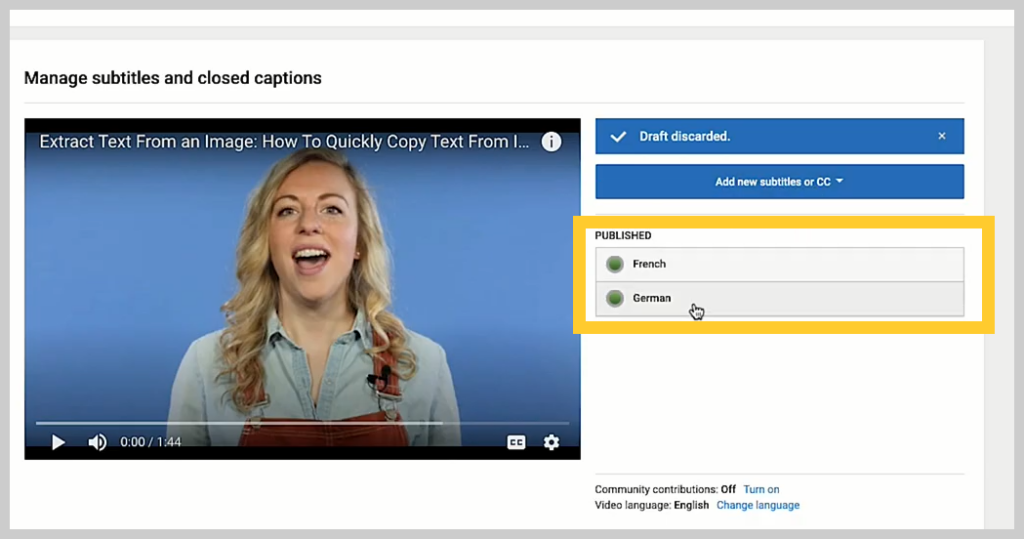
To add English captions (or for any supported language), you can either search for English in the language search bar or make a selection from the dropdown menu.
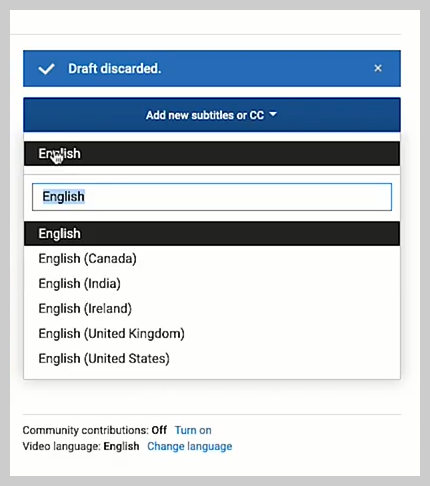
The first option, ‘Upload a file’ allows you to add premade captions by uploading an SRT file. Then the ‘Transcribe and auto-sync’ option allows you to manually add your them by typing along as your subject speaks.
Finally, the ‘Create new subtitles or CC’ allows you to see YouTube’s auto-transcription and edit what they’ve already done.
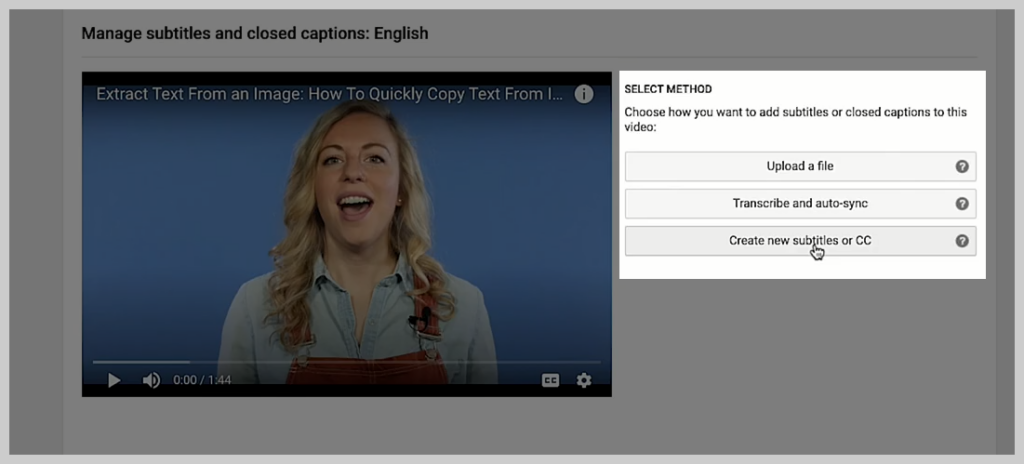
If you’ve already created a caption file, click ‘Upload a file’.
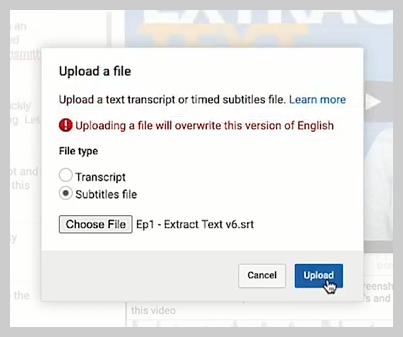
Once you’ve chosen and uploaded your file, you might notice that Youtube auto-transcribes your captions in the background. While YouTube’s transcription is usually pretty close, it’s better to use your own in order to guarantee their accuracy.
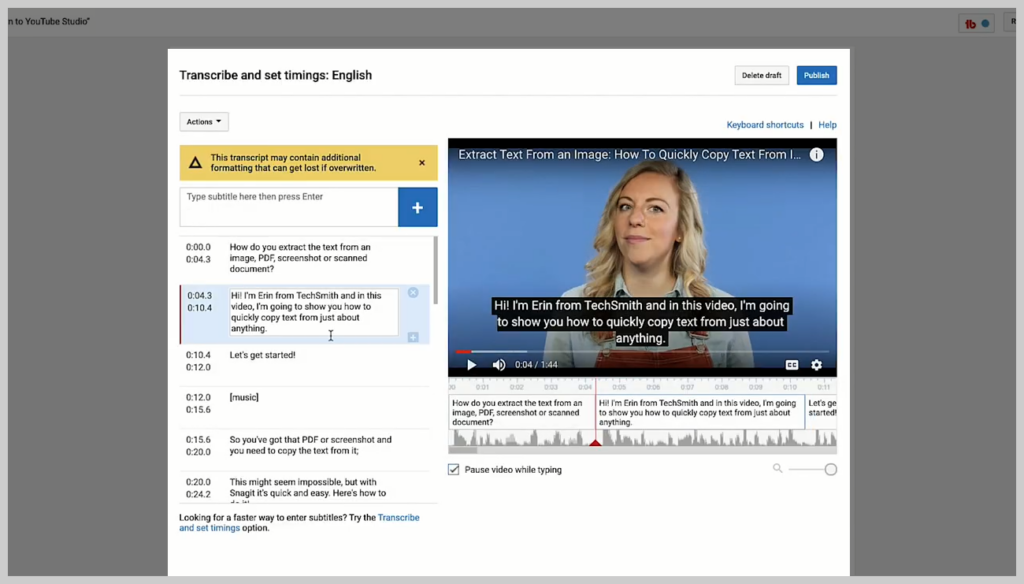
And if you want to edit it you can go through and click on any one of them to make changes.
It’s that simple.
If you choose to use YouTube’s auto transcription it’s very simple to go in and make any edits you need to once it’s finished.
Easily add captions to your videos now!
Download a free trial of Camtasia to seamlessly add subtitles to your video.
Download NowCaptions vs subtitles, what’s the difference?
While the terms “subtitles” and “captions” are often used interchangeably, there are some important differences.
What are video captions?
Captions convey dialogue and/or narration plus any other audio effects that may be present in a video.
This includes when (and what type of) music is playing and any background noises such as loud crashes, cars honking, or dogs barking that may be integral to understanding what’s happening on the screen.
In fact, to meet accessibility standards, captions must include those elements.
One of the most widely-known uses for captions — closed captioning — is a way for people who are deaf or hard of hearing to be able to access and understand the audio portions of a video. Remember, to be considered accessible to people with disabilities, your video must have closed captions.
What are video subtitles?
Subtitles convey only the dialogue or narration happening in a video. Subtitles do not meet standards for accessibility for people with disabilities, but have other uses.
Subtitles used for translating one language to another would likely also include translations of any foreign language text shown on the screen.
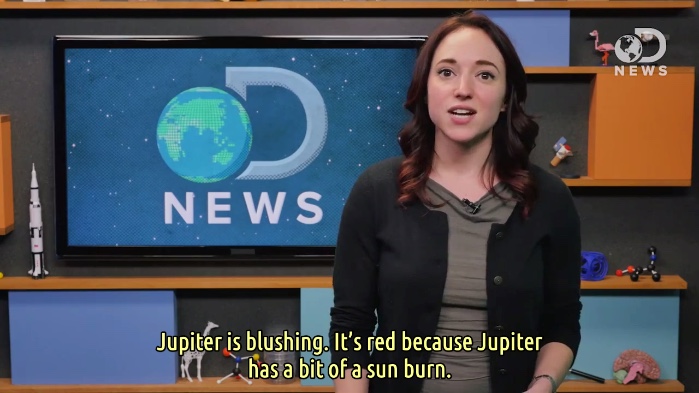
Benefits of adding subtitles and captions to your videos
While there are many advantages of adding captions and subtitles to your videos, one of the greatest benefits is how it makes your content accessible to a larger and more diverse audience.
For example, for people with impaired hearing, closed captions ensure they can understand and enjoy your video content. Even for those who aren’t hearing impaired, captions can significantly improve comprehension, which is especially true when there’s background noise in the recording.
Captions can also boost your video’s search ranking. Search engines rely on metadata when trying to understand the content of a video, this includes titles, descriptions, and — you guessed it — captions. By adding captions, you provide search engines with more information, which increases the likelihood of your video ranking higher in search results.
Captions can also help to increase engagement with your video. In noisy environments or public places, viewers might be unable to turn up the volume of their device to hear the video’s audio. However, with captions, they can easily follow and engage with your content, no matter where they are.
If you found this guide helpful, you might also enjoy learning how to record the perfect live streaming video, how to fix blurry video, and how to make a video template.
What type of videos need captions?
The shortest answer is: All of them!
The way people consume media has changed a lot and it’s important not to make any assumptions about who your audience are, where they are, or the device they’re using. For every video you create, there is always a chance that it will be viewed on desktop computers and handheld devices, in home offices, cafes, and on public transport.
As you can’t predict where you’re audience will be watching from or what device they’ll be using, you need to prepare for all possibilities, and adding captions to all your videos is one of the best ways to do exactly that.
By ensuring your videos can be enjoyed by everyone, you’ll be increasing the chances of your content being both discovered and engaged with.
Captions for social media
On many social media platforms, including Facebook and Instagram, videos will — by default — play without any sound. Many users will even watch a social media video without turning up the volume on their device. As such, having captions on your video is essential to capturing a viewer’s attention and ensuring your content is accessible.
Captions can also be translated into different languages and help non-native speakers better understand your video and digest the information you’re trying to convey.
Captions for educational videos
Captions are equally important when it comes to creating educational videos. By making it easier to follow and understand what’s happening on screen, reinforcing key concepts, and improving knowledge retention, captions can enrich a pupil’s learning experience. Plus, closed captions are essential for accessibility, ensuring all students have equal access to the information provided.
Furthermore, students who might struggle to follow spoken lectures can read along with the text, ensuring that they don’t miss any important information. Closed captions translate into different languages, making educational videos more inclusive and accessible for international students.
Captions for business videos
Captions in business videos can increase engagement and retention among employees and customers, making the content more memorable and impactful. Whether it’s a video for internal communication or technical communication, including captions in your business videos will ensure your message is accessible to everyone, no matter where they are, or what device they’re watching on.
Captions also help reinforce key points and ideas. They make it more likely that people remember the information. Adding them to business videos is a simple and effective way to ensure that messages are communicated clearly and effectively to all audiences across a range of formats and platforms.
Your video isn’t really done until it has captions
Captions on videos help viewers understand not just what’s being said onscreen, but also the context around what other audio may be happening in your video. They’re important for helping people who are deaf or hard of hearing access your content, but also help anyone who may be in a situation where they choose to turn down the audio.
Regardless, including captions in your videos is an essential part of ensuring its success.
Easily add captions to your videos now!
Download a free trial of Camtasia to seamlessly add subtitles to your video.
Download NowAdd captions and subtitles to videos, FAQs
With TechSmith’s Capture app, available in the App Store, you can easily record your iPhone screen and import media from Photos. From there, quickly transfer your video to Camtasia to add captions.
Yes! Here’s how to add captions to a video automatically with Camtasia. Simply use the “Speech-to-Text” function (currently only available on Windows), which generates captions by transcribing the audio in your video. Once they are created, you can easily edit and customize them.



Share